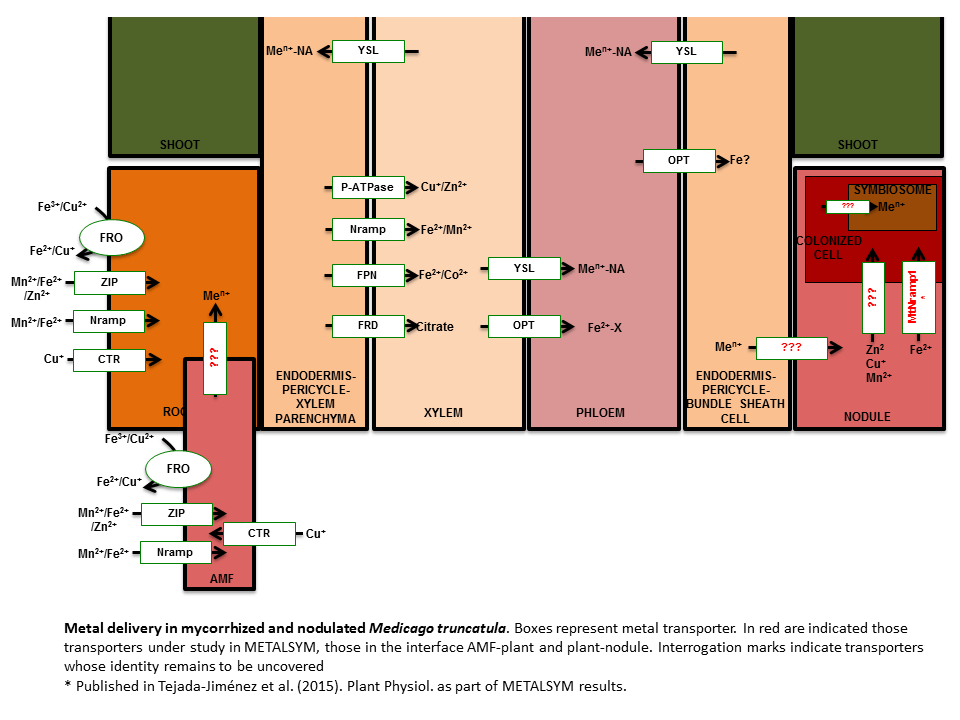Plants require transition metals (iron, copper, zinc,…) for most of their biological processes, from photosynthesis to seed production. However, they often grow in soils with low metal bioavailability. This has an impact on plant growth, crop yield, and crop nutritional value. As a result, a considerable effort has been made to understand how plants take metals from soil and translocate them to sink organs. In the ERC project METALSYM, we intend to study how plant-associated endosymbionts affect plant metal homeostasis. Our model is the legume Medicago truncatula and the endosymbionts Rhizophagus irregularis (an arbuscular mycorrhizal fungi), and Sinorhizobium meliloti (a rhizobia).
ERC Funded Project
Metal homeostasis in the tripartite symbioses arbuscular micorrhizal fungi-legume-rhizobia (METALSYM)

About this project

Arbuscular mycorrhizal fungi (AMF) establish a symbiotic relationship with over 85% of terrestrial plants. After a complex process, AMF intraradical hyphae branch multiple times to develop “arbuscules” that penetrate into the host cell without cross the host cell plasma membrane. As a result an interface between two differentiated membranes is created: the arbuscular membrane, and the host plasma membrane-derived periarbuscular one. Across this interface, AMF provide >90% of the plant phosphate requirements, >50% of nitrogen requirements, and similar levels of sulphur, iron, copper, and zinc. In exchange, the host provides photosynthates across the same membranes. In METALSYM we are studying the plant metal transporters at this interface.
Legume nodules result from the interaction with specific rhizobia. Within them, the proper conditions conditions are created for rhizobia to differentiate into bacteroids, that are able to convert, fix, N2 into ammonia. This fixed nitrogen is transferred to the host plant, while receiving photosynthates, phosphate, sulphur, and transition metals. We have identified several metal transporters responsible for metal exchange with the nodules. As part of this ERC project, we are now characterizing them.
However, we are not merely collecting these genes, but studying how natural variation in them correlates with improved nitrogen fixation rates and crop nutritional value.
